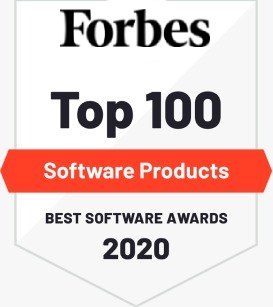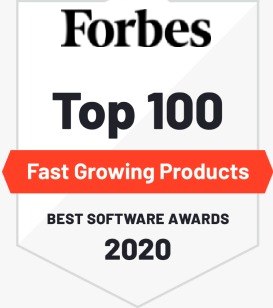Section 1 : Overview
|
|
Lecture 1 | Program overview | 00:08:46 Duration |
|
|
Lecture 2 | Course guidelines | |
|
|
Lecture 3 | Agile Manifesto and Agile Principles |
Section 2 : Agile Project Management Essentials
Section 3 : Adopting an Agile Approach
Section 4 : The Scrum Development Process
|
|
Lecture 1 | Section overview | 00:01:26 Duration |
|
|
Lecture 2 | Defining scrum | 00:06:32 Duration |
|
|
Lecture 3 | The scrum approach | |
|
|
Lecture 4 | The product owner | 00:02:26 Duration |
|
|
Lecture 5 | The scrum master | 00:02:26 Duration |
|
|
Lecture 6 | The development team | 00:02:32 Duration |
|
|
Lecture 7 | Agile project team, scrum team, and developmen | |
|
|
Lecture 8 | The scrum team in practice | 00:05:42 Duration |
|
|
Lecture 9 | Communicating with stakeholders | 00:09:45 Duration |
|
|
Lecture 10 | Scrum meetings | 00:07:35 Duration |
|
|
Lecture 11 | Sprints are recurring processes | |
|
|
Lecture 12 | The pre-game phase | 00:04:58 Duration |
|
|
Lecture 13 | The game phase | 00:05:07 Duration |
|
|
Lecture 14 | The post-game phase | 00:04:14 Duration |
|
|
Lecture 15 | A scrum task board on a wall or whiteboard | |
|
|
Lecture 16 | Pre-game planning | 00:12:43 Duration |
|
|
Lecture 17 | Developing a high-level design | 00:08:23 Duration |
|
|
Lecture 18 | Sprint planning | 00:04:31 Duration |
|
|
Lecture 19 | Sample sprint backlog | |
|
|
Lecture 20 | Daily standup meetings | 00:04:17 Duration |
|
|
Lecture 21 | Unit tests and sprint reviews | 00:04:55 Duration |
|
|
Lecture 22 | Sprint retrospectives and closure | 00:04:12 Duration |
|
|
Lecture 23 | Burndown charts | 00:06:13 Duration |
|
|
Lecture 24 | A burndown chart | |
|
|
Lecture 25 | Progress charts | 00:04:15 Duration |
|
|
Lecture 26 | The scrum task board | |
|
|
Lecture 27 | Using tracking metrics | 00:07:35 Duration |
|
|
Lecture 28 | Section project (optional) | |
|
|
Lecture 29 | The scrum development process | 00:01:23 Duration |
|
|
Lecture 30 | Agile transition roadmap |
Section 5 : Initiation and Requirements Gathering
|
|
Lecture 1 | Section overview | 00:05:02 Duration |
|
|
Lecture 2 | Benefits of planning | 00:13:41 Duration |
|
|
Lecture 3 | Initial Backlog Ranked for Changes | |
|
|
Lecture 4 | Levels of agile planning | 00:11:04 Duration |
|
|
Lecture 5 | Roadmap to Value | |
|
|
Lecture 6 | Agile planning activities | 00:12:59 Duration |
|
|
Lecture 7 | Planning an agile project | 00:05:24 Duration |
|
|
Lecture 8 | Uncertainty and Compelxity Model | |
|
|
Lecture 9 | Creating a business case | 00:07:47 Duration |
|
|
Lecture 10 | Relationship between change management and ag | |
|
|
Lecture 11 | Elements of a product vision | 00:10:56 Duration |
|
|
Lecture 12 | Defining project scope | 00:02:00 Duration |
|
|
Lecture 13 | Developing use cases | 00:12:28 Duration |
|
|
Lecture 14 | Formatting user stories | 00:18:20 Duration |
|
|
Lecture 15 | User story and acceptance criteria | |
|
|
Lecture 16 | Section project (optional) | |
|
|
Lecture 17 | Project Initiating and Requirements Gathering | 00:04:59 Duration |
Section 6 : Planning and Monitoring Iterations
|
|
Lecture 1 | Section overview | 00:05:59 Duration |
|
|
Lecture 2 | Introduction to iteration planning | 00:08:01 Duration |
|
|
Lecture 3 | Iteration planning activities | 00:11:41 Duration |
|
|
Lecture 4 | Iterative Life Cycle | |
|
|
Lecture 5 | Key outputs | 00:04:22 Duration |
|
|
Lecture 6 | Creating the user backlog and splitting large | 00:07:03 Duration |
|
|
Lecture 7 | Breaking stories into tasks | 00:05:38 Duration |
|
|
Lecture 8 | Estimating tasks | 00:06:06 Duration |
|
|
Lecture 9 | Types of scheduling buffers | 00:10:11 Duration |
|
|
Lecture 10 | Calculating a project buffer | 00:17:00 Duration |
|
|
Lecture 11 | Iteration planning for complex projects | 00:19:55 Duration |
|
|
Lecture 12 | Monitoring agile projects | 00:06:12 Duration |
|
|
Lecture 13 | Monitoring tools | 00:17:47 Duration |
|
|
Lecture 14 | Updating release plans | 00:11:21 Duration |
|
|
Lecture 15 | Interpreting project release information | 00:19:32 Duration |
|
|
Lecture 16 | Section project (optional) | |
|
|
Lecture 17 | Planning and monitoring iterations | 00:05:27 Duration |
Section 7 : Leading an Agile Team
|
|
Lecture 1 | Section overview | 00:04:39 Duration |
|
|
Lecture 2 | The role of project leader | 00:06:13 Duration |
|
|
Lecture 3 | Agile Team Roles | |
|
|
Lecture 4 | The mindset of an agile project leader | 00:19:56 Duration |
|
|
Lecture 5 | Characteristics of an agile team | 00:19:23 Duration |
|
|
Lecture 6 | Attributes of Successful Agile Teams | |
|
|
Lecture 7 | Causes of problems in agile teams | 00:09:39 Duration |
|
|
Lecture 8 | Email versus face-to-face conversation | |
|
|
Lecture 9 | Strategies for overcoming challenges | 00:14:22 Duration |
|
|
Lecture 10 | Agile coaching | 00:12:10 Duration |
|
|
Lecture 11 | Expect high performance | 00:04:46 Duration |
|
|
Lecture 12 | Identify and fix problems | 00:06:20 Duration |
|
|
Lecture 13 | Energize team members | 00:05:03 Duration |
|
|
Lecture 14 | Section project (optional) | |
|
|
Lecture 15 | Leading an Agile Team | 00:04:17 Duration |
Section 8 : Managing Stakeholder Engagement
|
|
Lecture 1 | Section overview | 00:06:27 Duration |
|
|
Lecture 2 | Stakeholder types and responsibilities | 00:09:33 Duration |
|
|
Lecture 3 | Strategies for stakeholder engagement | 00:15:26 Duration |
|
|
Lecture 4 | The APM model | 00:01:53 Duration |
|
|
Lecture 5 | Initiation phase | 00:05:45 Duration |
|
|
Lecture 6 | Release planning phase | 00:07:57 Duration |
|
|
Lecture 7 | Development phase | 00:04:25 Duration |
|
|
Lecture 8 | Review and adapt phase | 00:03:56 Duration |
|
|
Lecture 9 | Close phase | 00:04:05 Duration |
|
|
Lecture 10 | Decision framing | 00:04:12 Duration |
|
|
Lecture 11 | Using a decision gradient | 00:12:33 Duration |
|
|
Lecture 12 | Knowledge sharing in agile projects | 00:03:36 Duration |
|
|
Lecture 13 | Documentation | 00:06:11 Duration |
|
|
Lecture 14 | Assessing Organisational Culture | |
|
|
Lecture 15 | Interaction | 00:04:35 Duration |
|
|
Lecture 16 | Open access to information | 00:08:30 Duration |
|
|
Lecture 17 | Release and iteration planning | 00:12:17 Duration |
|
|
Lecture 18 | Iteration reviews and testing | 00:10:03 Duration |
|
|
Lecture 19 | Section project (optional) | |
|
|
Lecture 20 | Managing Stakeholder Engagement | 00:05:37 Duration |
Section 9 : Value and Quality in Agile Projects
|
|
Lecture 1 | Section overview | 00:07:20 Duration |
|
|
Lecture 2 | Reasons for documentation | 00:10:04 Duration |
|
|
Lecture 3 | Quality feedback in an agile project | |
|
|
Lecture 4 | Crucial documentation | 00:05:55 Duration |
|
|
Lecture 5 | Guidelines for documentation | 00:09:59 Duration |
|
|
Lecture 6 | Fixed-price contracts | 00:06:38 Duration |
|
|
Lecture 7 | Other contract types | 00:13:26 Duration |
|
|
Lecture 8 | Risk management practices | 00:11:29 Duration |
|
|
Lecture 9 | Testing within sprints | |
|
|
Lecture 10 | Risk management tools | |
|
|
Lecture 11 | Agile Project Risk Management Tools | |
|
|
Lecture 12 | Calculating earned value | 00:04:26 Duration |
|
|
Lecture 13 | Calculating performance | |
|
|
Lecture 14 | Determining project health | 00:15:56 Duration |
|
|
Lecture 15 | Agile quality processes | 00:08:50 Duration |
|
|
Lecture 16 | Earned Value in an Agile Context | |
|
|
Lecture 17 | Quality principles and practices | 00:05:26 Duration |
|
|
Lecture 18 | Technical debt | 00:05:40 Duration |
|
|
Lecture 19 | Refactoring | 00:03:32 Duration |
|
|
Lecture 20 | Prototyping | 00:07:02 Duration |
|
|
Lecture 21 | Agile testing | 00:10:54 Duration |
|
|
Lecture 22 | Improving agile quality | 00:05:59 Duration |
|
|
Lecture 23 | Section project (overview) | |
|
|
Lecture 24 | Ensuring delivery of value and quality in agi | 00:07:13 Duration |
Section 10 : Agile Key Exam Concepts
|
|
Lecture 1 | Section Overview | 00:02:11 Duration |
|
|
Lecture 2 | Waste Types | 00:05:52 Duration |
|
|
Lecture 3 | The Kanban Pull System | 00:06:14 Duration |
|
|
Lecture 4 | Kanban Boards | 00:05:36 Duration |
|
|
Lecture 5 | Determining Lead Time and Cycle Time | 00:05:59 Duration |
|
|
Lecture 6 | Process Cycle Efficiency | 00:06:54 Duration |
|
|
Lecture 7 | Little's Law | 00:07:17 Duration |
|
|
Lecture 8 | Communicating the Product Vision | 00:06:04 Duration |
|
|
Lecture 9 | Defining the Agile Team's Physical Space | 00:06:01 Duration |
|
|
Lecture 10 | Exercise - Key Agile Exam concepts | 00:05:09 Duration |
|
|
Lecture 11 | Agile Key Exam Concepts | 00:01:53 Duration |
|
|
Lecture 12 | PMI Certification Info |
Section 11 : Agile Software Testing - Bonus
|
|
Lecture 1 | Course Overview | 00:03:59 Duration |
Section 12 : Agile Software Testing - Methodologies and Approaches
|
|
Lecture 1 | Section Overview | 00:02:13 Duration |
|
|
Lecture 2 | Agile Software Development and the Agile Mani | 00:07:10 Duration |
|
|
Lecture 3 | The Twelve Principles of the Agile Manifesto | 00:04:57 Duration |
|
|
Lecture 4 | The Whole Team Approach | 00:03:25 Duration |
|
|
Lecture 5 | Early and Frequent Feedback | 00:04:16 Duration |
|
|
Lecture 6 | Extreme Programming (XP) | 00:05:23 Duration |
|
|
Lecture 7 | Scrum | 00:04:16 Duration |
|
|
Lecture 8 | Kanban | 00:05:00 Duration |
|
|
Lecture 9 | Collaborative User Stories | 00:05:13 Duration |
|
|
Lecture 10 | Creation of User Stories | |
|
|
Lecture 11 | Retrospectives | 00:06:38 Duration |
|
|
Lecture 12 | Continuous Integration | 00:04:04 Duration |
|
|
Lecture 13 | Release and Iteration Planning | 00:03:27 Duration |
|
|
Lecture 14 | Agile Testing and Development Activities | 00:04:11 Duration |
|
|
Lecture 15 | Agile Project Work Products | 00:02:41 Duration |
|
|
Lecture 16 | Agile Test Levels | 00:02:57 Duration |
|
|
Lecture 17 | Agile Testing and Configuration Management | 00:03:22 Duration |
|
|
Lecture 18 | Agile and Independent Testing | 00:03:35 Duration |
|
|
Lecture 19 | Communicating Test Status and Product Quality | 00:04:28 Duration |
|
|
Lecture 20 | Managing Risk Regression | 00:02:19 Duration |
|
|
Lecture 21 | Skills of an Agile Tester | 00:03:35 Duration |
|
|
Lecture 22 | Role of an Agile Tester | 00:03:04 Duration |
|
|
Lecture 23 | Course Project (optional) | |
|
|
Lecture 24 | Agile Software Testing - Methodologies and Ap | 00:02:03 Duration |
Section 13 : Agile Software Testing - Techniques and Tools
|
|
Lecture 1 | Section Overview | 00:01:33 Duration |
|
|
Lecture 2 | Test-driven and Behavior-driven Development | 00:08:11 Duration |
|
|
Lecture 3 | Test Levels | 00:04:52 Duration |
|
|
Lecture 4 | A Scrum Tester | 00:05:09 Duration |
|
|
Lecture 5 | Quality Risks in Agile Projects | 00:05:03 Duration |
|
|
Lecture 6 | Estimation of Testing Effort | 00:05:04 Duration |
|
|
Lecture 7 | Test Basis in Agile Projects | 00:03:49 Duration |
|
|
Lecture 8 | Definition of Done | 00:04:46 Duration |
|
|
Lecture 9 | Acceptance Test-driven Development | 00:05:42 Duration |
|
|
Lecture 10 | Functional and Nonfunctional Black Box Test D | 00:04:49 Duration |
|
|
Lecture 11 | Exploratory Testing | 00:07:30 Duration |
|
|
Lecture 12 | Task Management and Tracking Tools | 00:05:05 Duration |
|
|
Lecture 13 | Communication and Information-sharing Tools | 00:04:32 Duration |
|
|
Lecture 14 | Test Development and Configuration Tools | 00:06:46 Duration |
|
|
Lecture 15 | Course Project (optional) | |
|
|
Lecture 16 | Agile Software Testing - Techniques and Tools | 00:01:43 Duration |


